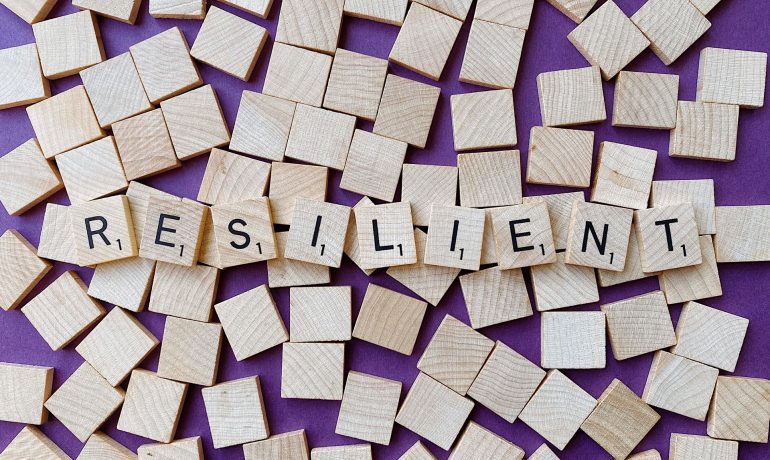The major shock of the pandemic highlights how successfully or otherwise different organisations are coping. We can also see how previous shocks/”black swans” have been dealt with more or less well. Several commentators have noted how organisations have increasingly been focussed on “efficiency”, with the result that there was less slack in the system to cope when shocks hit – less resilience. To what extent is sacrificing short term profitability for long term success worthwhile?
The Boston Consultancy Group in their excellent blog “Becoming an All-Weather Company” argue that long-run performance is disproportionately determined by performance in crisis periods. They produced a very valuable set of “design principles” to enhance resilience.
![]()
Anticipation
Being sensitive to possible alternative futures is clearly a pre-requisite of resilience. This is the area that SAMI tends to focus on, helping clients build scenarios of the future. Companies first identify long-term shifts, major drivers of change or “megatrends”. They then build contingency plans for the different potential situations, and ideally war-game them to test how well they work. Good organisations then adapt their plans: the Government’s response to the pandemic wargame (“Project Cygnus”) failed to pick up on the deficiencies identified. The final element is to introduce a strong early-warning monitoring system to trigger responses and implement (and adapt) the contingency plans.
The area that BCG call “cushioning” has a number of elements.
Redundancy
An anathema to “efficiency”, having spare resources is essential to resilience. These may be extra stocks to cope with disruption to supply chains (the antithesis of “just in time”), or extra staff available to be drafted into “surge” responses (or reservists that can be called upon). Or they may be financial reserves such as an above average cash/operating cost ratio.
Diversity
Organisations should identify the options to switch to different revenue sources: having different products, customers or regions reduces exposure to shocks. Clearly, an over-reliance on a single, narrow market makes you vulnerable. Equally, over-reliance on single suppliers, production sites or processes creates an exposure to risk. Interestingly, BCG didn’t identify diversity in its cultural sense as a strength – in SAMI we always seek to get a diversity of views into strategy development, as it reduces the risk of group-think.
Modularity
By this BCG mean building systems which reduce inter-dependencies between elements, so that if one fails it doesn’t bring down the whole operation. Modularity can be built into production processes and into supply chains. There is also the issue of financial separation, where the failure of one division doesn’t bankrupt the whole company.
Embeddedness
I found this concept one of the more innovative – the extent to which the organisation’s goals are in alignment with the social systems of the markets it serves. Highly embedded organisations can rely on a good degree of social capital that can be drawn upon in times of crisis. Local companies tend to be better at this – eg restaurants’ clienteles being willing to buy take-aways to keep them company alive. In larger organisations, Corporate Social Responsibility programmes should be aiming to achieve the same result – but probably rarely do.
BCG’s next area was Adaptation.
This has two elements. First, the capacity and capability for experimentation, being willing and able to try new approaches, new products, new markets to see whether they offer relief from the crisis, and if not move on to something else. ““Fail fast” is the mantra of this approach. The second is “Agility”, typically created by decentralised decision-making and collective action. Oddly, BCG seem to think algorithmic decision-making helps with this – it may speed up decision-making, but I would be surprised if was innovative enough to cope with radical change.
Finally, we come to Shaping.
Change and crises are not all about risk – they create opportunities too. Intelligent organisations can identify how the shock has changed the system, and spot the new markets, products or processes that can now emerge. The ability to be the first to respond to these new opportunities will differentiate the organisation from its rivals.
Being BCG, they typically claim to be able to quantify the benefits of being a resilient company. Personally, I find these analyses somewhat spurious, but if you are needing to persuade your Board of the value of being resilient, BCG suggest you could claim “that resilience in unfavorable periods accounts for nearly 30% of long-term outperformance” and “15% of companies displayed general resilience by outperforming their industries in more than 80% of the crisis quarters they faced over the 25-year study period.”
There is also a discussion to be had around which industries are intrinsically less resilient and how they should manage that lack of resilience. There is an interesting dichotomy between which organisations are seen as financially resilient – long-term infrastructure companies such as telecoms networks and extractive industries are less vulnerable to everyday shocks – and those which are agile – FMCG, software – which can pick up on new trends rapidly. The longer it takes you to react to change, the further ahead you need to be looking, and the more sophisticated scenarios you should be building.
There are interesting echoes in BCG’s analysis of Nassim Taleb’s “anti-fragile” concept. Instead of “durability”, Taleb (of “black swan” fame) argues that organisations should aim to become stronger when damaged, like the mythical Hydra growing two heads when one is cut off. The resilient resists shocks and stays the same; the anti-fragile gets better and better. Only BCG’s “Shaping” element comes close to this. Nonetheless, I’m sure that most organisations would settle for durable, and out-performing their competitors.
SAMI Consulting can help you become more resilient, making “robust decisions in uncertain times”, and building alternative scenarios of the future from which sound contingency plans and capabilities can be created.
Written by Huw Williams, SAMI Principal
The views expressed are those of the author(s) and not necessarily of SAMI Consulting.
Trusted strategic foresight techniques help you make better decisions today and ensure your future success. Since its founding in 1989 by Shell and St Andrews University, SAMI Consulting has delivered scenario planning projects nationally and internationally and provided the link between futures research and strategy enabling organisations to take “robust decisions in uncertain times”
If you enjoyed this blog from SAMI Consulting, the home of scenario planning, please sign up for our monthly newsletter at newreader@samiconsulting.co.uk and/or browse our website at https://www.samiconsulting.co.uk
Image by Wokandapix from Pixabay



[…] uncertainty generated by the pandemic has led McKinsey to follow BCG’s attempt, that we commented on previously, and focus on resilience. Their recent report, “Succeeding in uncertain times”, identifies […]